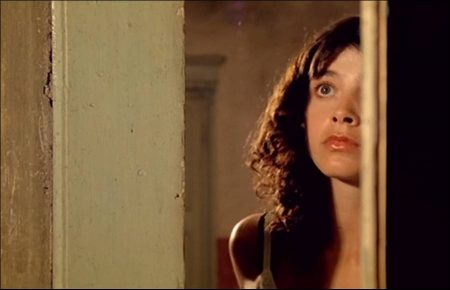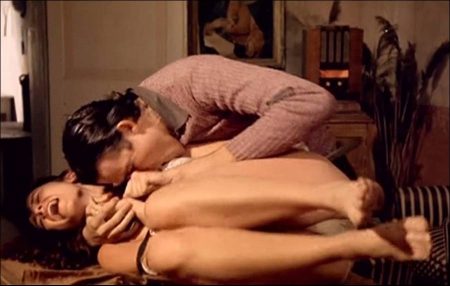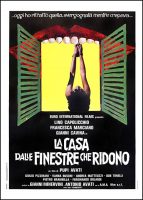The House with Laughing Windows movie storyline. The restorer Stefano is hired by the Mayor Solmi of a small village nearby Ferrara to restore a painting of St. Sebastian, made by the mentally disturbed painter Buono Legnani in the local church. Stefano was recommended by his friend, Dr. Antonio Mazza, and he learns that Legnani was known as “The Painter of the Agony”, since he used to paint near-death people. Further, he was presumed dead many years ago but his body has never been found.
Stefano works in the church, where he meets the weirdo Lidio, and he has one night stand with the local nymphomaniac teacher that is leaving the village. Meanwhile Antonio investigates the life of Buono Legnani and tells Stefano that he had found a dark secret about the painter and the villagers. However, Antonio dies before meeting Stefano and the police conclude that he committed suicide. Stefano is intrigued by the mystery surrounds Legnani and decides to investigate more about the deranged painter.
However, he in evicted of his hotel room and Lidio brings him to the isolated house of a paraplegic woman where he lives. Meanwhile, he meets the teacher’s substitute Francesca and they have a love affair. Francesca moves to Stefano’s room and they are affected by the strange atmosphere of the place. When the restoration is damaged by acid, Stefano decides to leave the village with Francesca. However, he meets the alcoholic driver Coppola that decides to disclose to him the secret of the house of the laughing windows. But now it seems to be too late to move out of the mysterious village.
The House with Laughing Windows (Italian: La Casa dalle Finestre che Ridono) is a 1976 Italian giallo film co-written and directed by Pupi Avati. The film was shot in Lido degli Scacchi in the Ferrara province of the Emilia-Romagna region in northern Italy. Giallo is the Italian term designating mystery fiction. The word giallo is Italian for yellow. The term derives from a series of cheap paperback mystery novels with yellow covers that were popular in Italy.
The idea for The House With Laughing Windows came from a story director Pupi Avati had heard as a child involving the exhumation of a priest in the village of Sasso Marconi. An early draft of the script was developed in the early 1970s under the title La luce dell’ultimo piano which was written by both Avati and Antonion Troisio. It was produced by Antonio Cuomo who later backed out of the project. Avati began working on the script again after the financial failure of his film House of Pleasure for Women and made several changes to the character and story. The final story and screenplay was credited to Pupi Avati and Antonio Avati.
The House with Laughing Windows was the first film produced by director Pupi Avati’s company A.M.A. Film. The film was shot over five weeks between April and May 1976 in Comacchio and Minerbio, Ferrara, Italy. Although the credits states Incir-De Paolis Studios in Rome, this was purely listed for bureaucratic reasons.
The House with Laughing Windows (1976)
Directed by: Pupi Avati
Starring: Lino Capolicchio, Francesca Marciano, Gianni Cavina, Giulio Pizzirani, Bob Tonelli, Vanna Busoni, Pietro Brambilla, Ferdinando Orlandi, Andrea Matteuzzi, Pina Borione
Screenplay by: Pupi Avati, Antonio Avati
Production Design by: Luciana Morosetti
Cinematography by: Pasquale Rachini
Film Editing by: Giuseppe Baghdighian
Costume Design by: Luciana Morosetti
Music by: Amedeo Tommasi
MPAA Rating: None.
Distributed by: Euro International Film
Release Date: August 16, 1976 (Italy)
Views: 268


